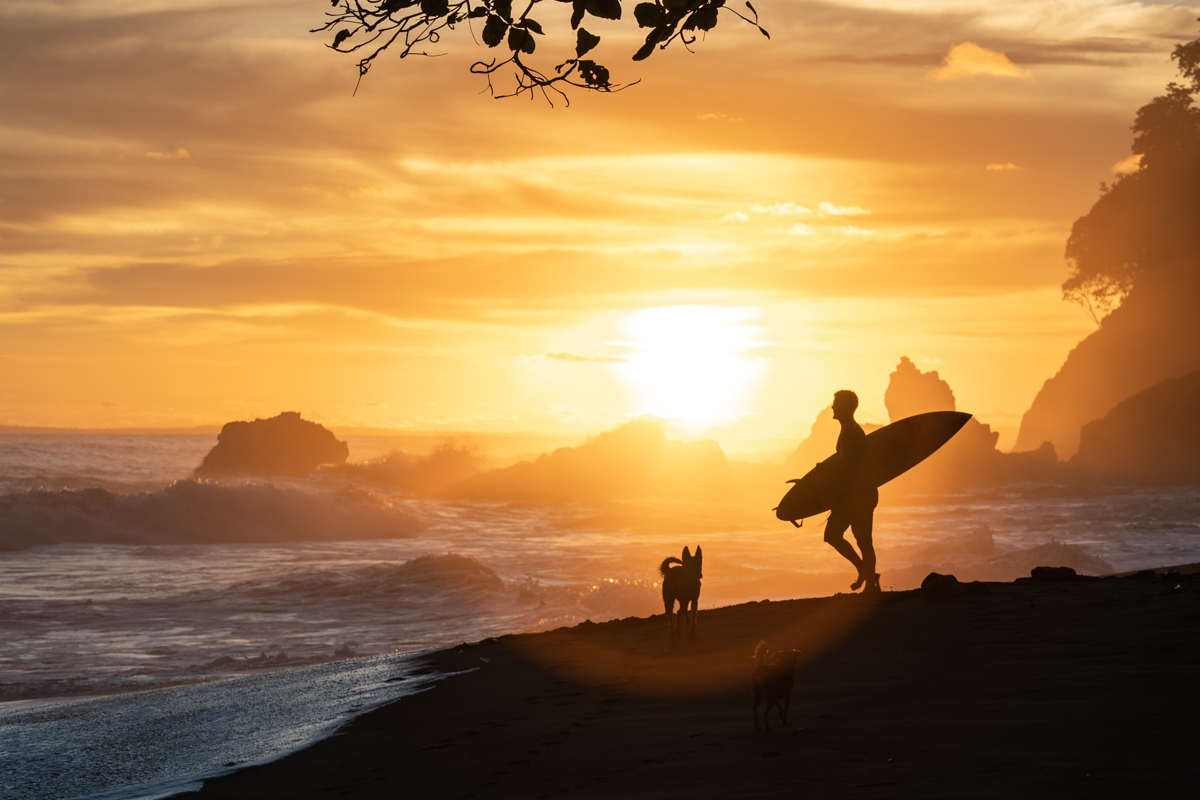
Costa Rica is a beautiful country with incredible scenery and biodiversity, and there is a LOT to see. It has a little bit of everything–beaches, wildlife, volcanoes, rainforests, and mountainous views. The best way to see Costa Rica and more of the country’s beauty is by taking a roadtrip adventure. This 10 Day Costa Rica Itinerary will take you to some of the most beautiful places in Costa Rica to see.
About Costa Rica
Costa Rica is located in Central America with Nicaragua to the north and Panama to the south. You can watch the sunrise on the beaches of the west coast and watch the sunset on the beaches on the east coast. And in between, you’ll find rainforests and waterfalls galore.
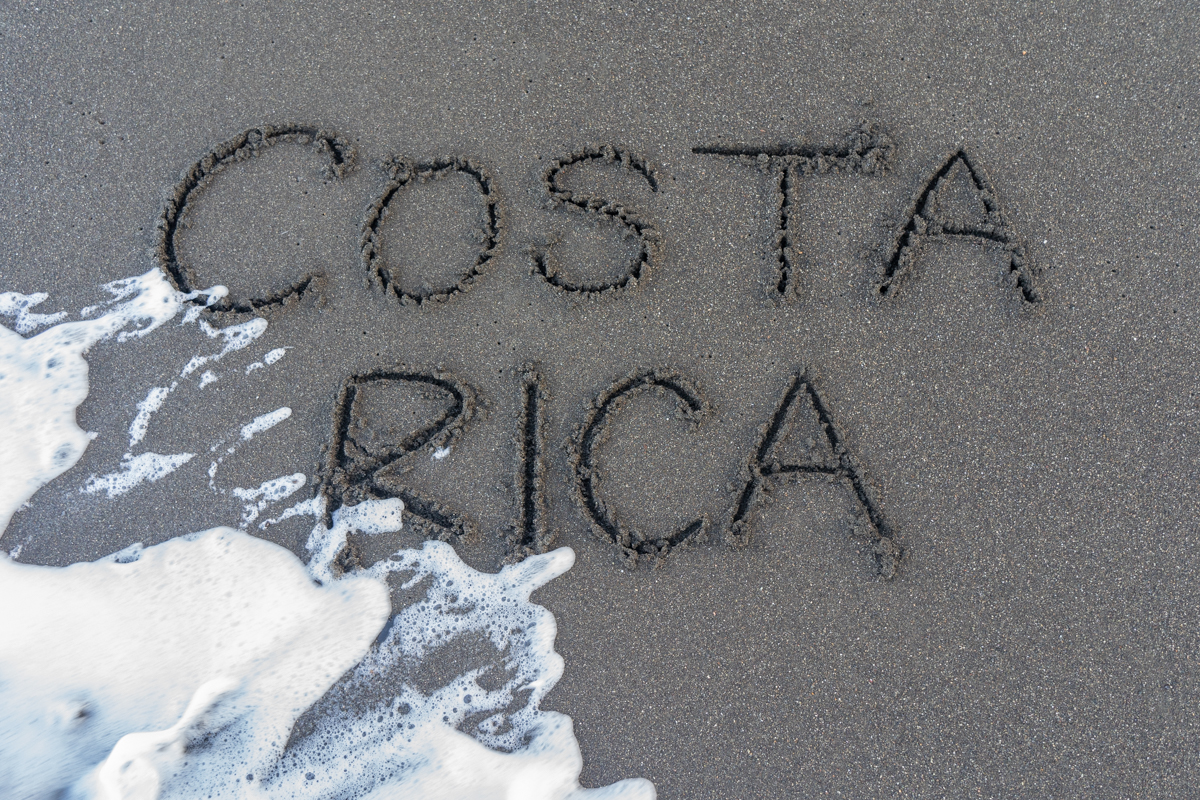
At a Glance:
- Language: Spanish
- Currency: Colones (CRC), $1 is about 650 CRC
- Capital City: San José
- Weather: Tropical Climate with a Rainy Season and Dry Season
There are 7 provinces in Costa Rica: San José, Puntarenas, Guanacaste, Alajuela, Limon, Cartago and Heredia. And about 28% of Costa Rica is protected–made up of national parks, wildlife refuges and reserves. No matter where you go, you’re almost guaranteed to see wildlife and beautiful scenery.
There are over 500,000 species of animals and if you’re lucky, you may be able to spot some of these on your trip. Costa Rica is home to sloths, parrots, toucans, howler monkeys, quetzals and jaguars to name a few.
You can discover cloud forests and rainforests (cloud forests being a type of rainforest, only higher in altitude) and 5 active volcanoes: Arenal, Poas, Irazu, Rincon de la vieja and Turrialba. (Two of which are on this 10 day Costa Rica itinerary!) Not to mention the numerous waterfalls that are scattered all around the country.
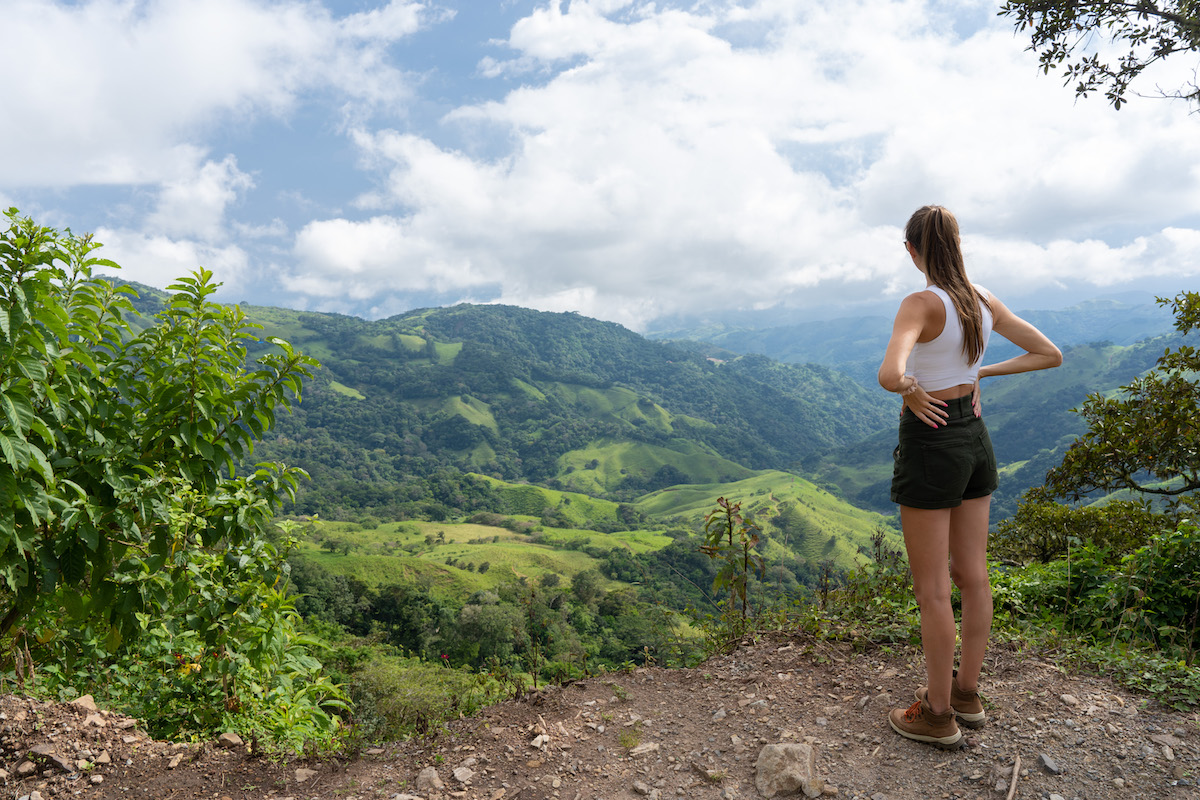
It’s also a surfer’s paradise with surfers coming from around the world to catch waves at a number of Costa Rica’s beaches. Because of its location near the equator, it consistently receives swells from both hemispheres, making this one of the top surf spots in the world.
Getting to Costa Rica
There are two airports you can fly into for Costa Rica: San José and Liberia. The San José airport is centrally located in the capital city. It’s a larger airport with more international flights and better accessibility to different parts of the country. The Liberia airport is located in the northwest and is a better option if you plan on exploring Guanacaste or the Northern part of Costa Rica. Flights to Liberia are usually more expensive.
For this 10 day Costa Rica itinerary, you’ll need to fly into the San José airport to start your roadtrip from there.
Getting Around
Costa Rica is fairly easy to get around, though most points of interest are pretty spread out and if you go off the beaten path, the roads will be rougher and more questionable. You can travel around by bus but if you’re only here for 10 days, I wouldn’t recommend it. There are many bus companies, different bus stops for each, wait times, etc. Getting a rental will be your best option for this trip.
Driving in Costa Rica
Driving in Costa Rica isn’t very hard and for popular tourist attractions, roads are paved and in decent shape for the most part. For lesser visited attractions, you might encounter some gravel or dirt roads.
Driving on roads that aren’t as traveled is kind of like playing roulette. You pick a route and hope for the best. We had a 4×4 and it was generally fine if we ended up on a road that was more like an off-roading trail. HOWEVER, there can be rough roads and there can be roads that run through rivers, and you may or may not be able to cross them.
We came upon several that were shallow and you could drive through them. But at one point, we were on what looked like a main road on the GPS, and suddenly came across this:
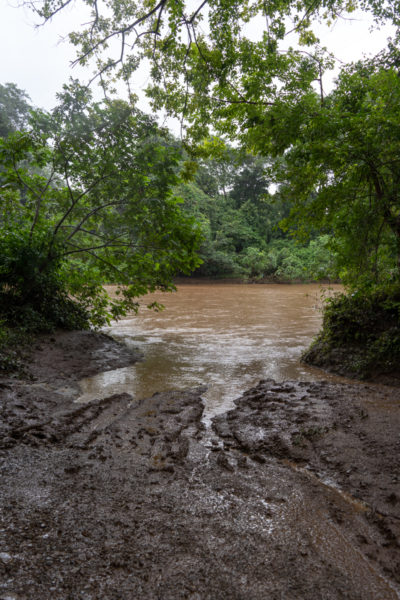
The other side of the road was somewhere to the left and we got soaking wet trying to look for it in the rain and assess the situation. But this was more of a rushing river, so we had to backtrack and find a different route with a bridge.
At another time, we were driving outside the capital and the road ended because there was a stream. But what should have been a bridge for CARS was a small pedestrian bridge. So the car road literally narrowed into a bridge for a person to walk across AND THEN WIDENED INTO A CAR ROAD AGAIN. We were so, so confused about that.
Renting a Car
Do you need a 4×4 in Costa Rica? It really depends on where you plan on visiting. If you want to stick to the main tourist attractions, you’ll likely be fine with a regular rental. If you want to be free to explore wherever and not worry about whether your car can handle it, a 4×4 is a good idea.
In this itinerary, you could probably get away with not having a 4×4 if you took it slow in some areas because there are some gravel/dirt roads along the way. We opted for a 4×4 so we wouldn’t have any limitations and we were glad we did.
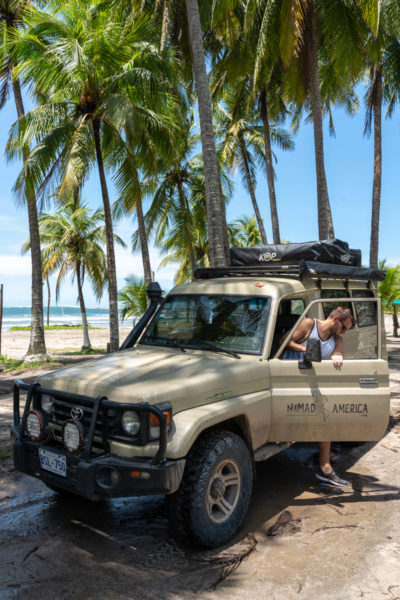
Travel Tip: Before your trip, I highly, highly recommend downloading an offline map of Costa Rica. You’ll need to have a GPS and likely won’t have cell service in a lot of these places. Download the app maps.me and then download an offline map for while you’re there. It’s a lifesaver.
Car Insurance
Another hot topic for car rentals in Costa Rica is the infamous car insurance. This is your warning! Car Insurance can be quite the surprise if you book from a regular car rental place online. It’s a complicated topic with lots of confusion and little clarity. But the consensus we had read about prior to our trip was ‘renter beware’ and that most renters were surprised with insurance fees that totaled the amount of the rental, essentially doubling the price.
There’s mandatory government insurance (SLI) which will not be waived even if your credit card has rental coverage. Then there’s optional CDW coverage which covers most things but not all things, and then optional full coverage to cover the things the other one doesn’t. I’m sorry. That’s the best explanation I could do. You can use a credit card’s coverage for the CDW coverage (I think). You also might get charged a random airport tax (on top of the taxes you’ll already have) if you pick up a car from the airport even though there are no rental companies that are actually at the airport.
We ended up taking some online advice and rented from Mapache car rental. It seemed to be cheaper, included necessary insurance without screwing us over and were helpful and pleasant to work with.
10 Day Costa Rica Itinerary
There are so many places to see in Costa Rica and you can take many different routes around the country. When I first started looking up places to go, I was overwhelmed with the amount of waterfalls, beaches and tours that you can take. And while you might prioritize different things on your trip (surfing, beaches, rainforest retreats, etc), the itinerary below is a good mixture of places that includes some of the top towns and attractions.
10 days in Costa Rica is the perfect amount of time to explore some of the most beautiful areas of the country.

Day 1: Arrive in San José
Explore in the afternoon, pick up rental.
Your first day in Costa Rica will most likely be the logistics of arriving and getting a rental car. And depending on how long that takes, you may have some time to explore in the afternoon.
However, the main thing to see in San José is the airport…on your way in and on your way out. There’s just not that much to see here and compared to the rest of the country, you’ll want to spend your time elsewhere. When we first started looking up things to do in San José, most articles listed day trips that take you OUT of the city as things to do (which is never a good sign).
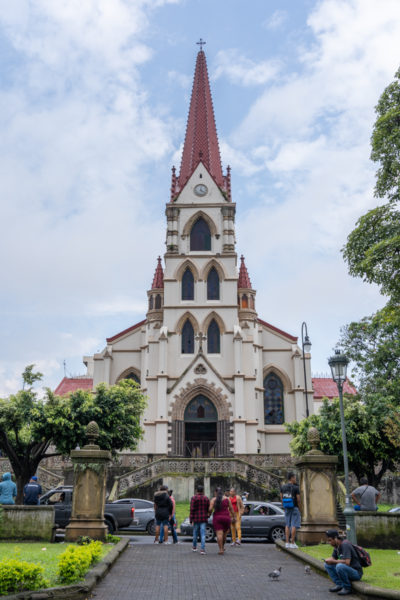
We explored in the afternoon when we arrived but were glad we didn’t decide to spend any more time here.
Stay: Downtown San Jose (if you plan on exploring the city), or Alajuela near the airport (if you get in later and/or won’t be exploring the city).
Downtown San Jose:
Near Alajuela:
Day 2: Poas Volcano + Waterfall Hike
Leave San Jose for the Poas Volcano and waterfall hikes.
The Poas Volcano is one of Costa Rica’s active volcanoes where you can see into the crater. It’s located about an hour and a half northwest from the center of San Jose. It’s a short hike and an easy attraction to see, but you’ll likely want to book your tickets early. You’ll also want to be mindful of the weather. During rainy season, rain tends to fall in the afternoon and you’re more likely to get clear skies in the morning. If the skies aren’t clear, you’re going to be paying to see the clouds.
We got lucky and had a split second break in the clouds that revealed the crater, but other than that, it was a white out.

The Poas Volcano sits between two roads and each road has waterfalls that you can see. Looking at a map, the road on the right of the volcano is the main, paved road that your GPS will take you on and the location of the La Paz Waterfall Gardens. The road on the left is lined with waterfalls and there are many options you can do. However, to get to the road on the left, you’ll be taking the road on the right to go up and around, and then down the left side. It’s a bit of a bumpy ride, but has some great options.
Option 1: La Paz WaterFall Gardens
The La Paz Waterfall Gardens is a nature park that consists of 5 waterfalls and a wildlife refuge. It’s one of the more expensive attractions you can do and we were worried it would be somewhat of a tourist trap. I have to say, we really enjoyed exploring here. The paths to the waterfalls take you through the rainforest and right up to the waterfalls. You get great vantage points and there was hardly anyone else on the paths when we were there.
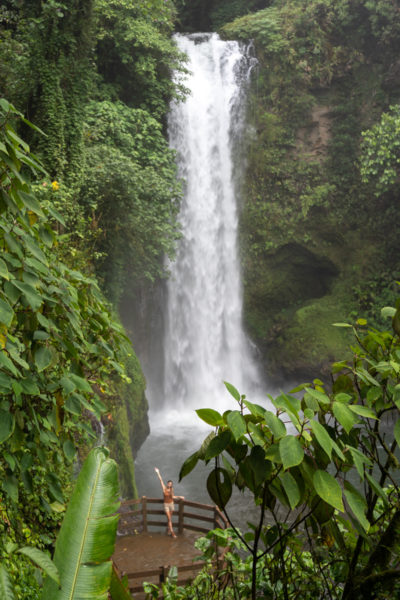
You also get to walk through the wildlife refuge where you can see monkeys, birds, jungle cats, snakes, butterflies, etc. All of the animals at this park were NOT taken from their natural habitats. Most of the animals were rescued from being illegally held as pets and/or are not able to survive on their own in the wild.
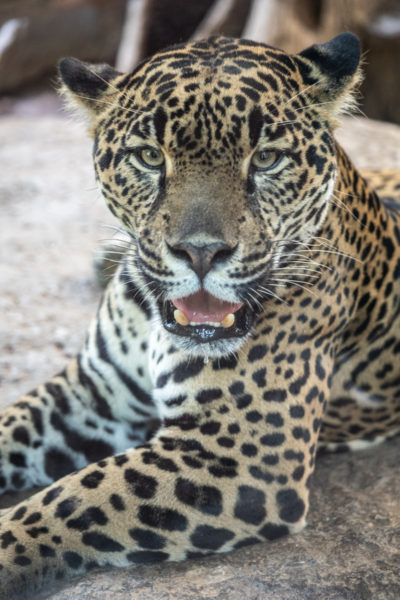
Option 2: Catarata del Toro
Catarata del Toro is a unique waterfall that falls into a volcanic crater. The pictures look incredible. This waterfall was high on my list and I was SO bummed when we put it into our GPS and it said ‘closed’. So take note–this waterfall is NOT open on Sundays.
It’s located on the left side of the Poas volcano on what I like to call Waterfall Row. Luckily there are other options for waterfall hikes in the area that are open on Sunday.
Option 3: Rio Agrio
Since we weren’t able to see Catarata del Toro, we ended up going further down the road to a waterfall called Rio Agrio. It’s an interesting spot because there’s a Dinoland right next to the trail with motorized dinosaurs along a path for kids. We weren’t sure what we were getting ourselves into, but the path to the waterfall leads you to an incredibly beautiful spot with steep rock walls covered in greenery.
It looked straight out of a scene from Jurassic Park and then we understood the Dinoland section. But the hike was well worth it and ended up being one of our favorites.
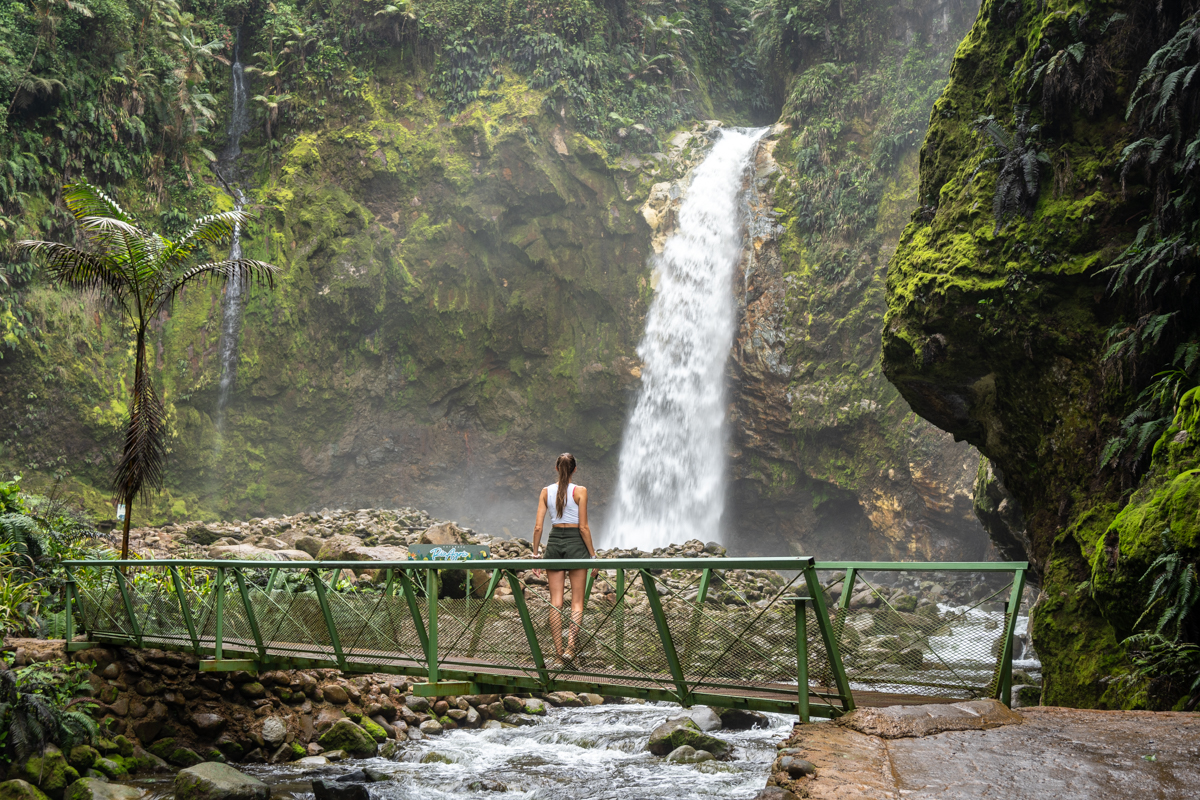
Stay: Depending on how long you want to explore the area, you may want to stay nearby or continue on driving to La Fortuna (1.5 hour drive).
Near the waterfall garden:
- The Peace Lodge $$$ (located AT the Waterfall Garden)
Near the waterfalls on the left:
La Fortuna: See below!
Day 3: La Fortuna
Explore La Fortuna–La Fortuna Waterfall, rope swing and hot springs.
From the waterfalls, you’re about an hour and a half away from La Fortuna–a cute town with lots of shops, restaurants and an incredible view of Costa Rica’s most active volcano: Arenal Volcano. There’s lots to do in this little town as well as the surrounding area.
La Fortuna Waterfall

The La Fortuna waterfall sits in the middle of the lush rainforest. You get a great view from the overlook before taking the hike down. This is one place where you are able to swim at the waterfall and there’s a section down the river that is nice for swimming as well. Just take note that there are many, many steps that you’ll have to take to get back up.
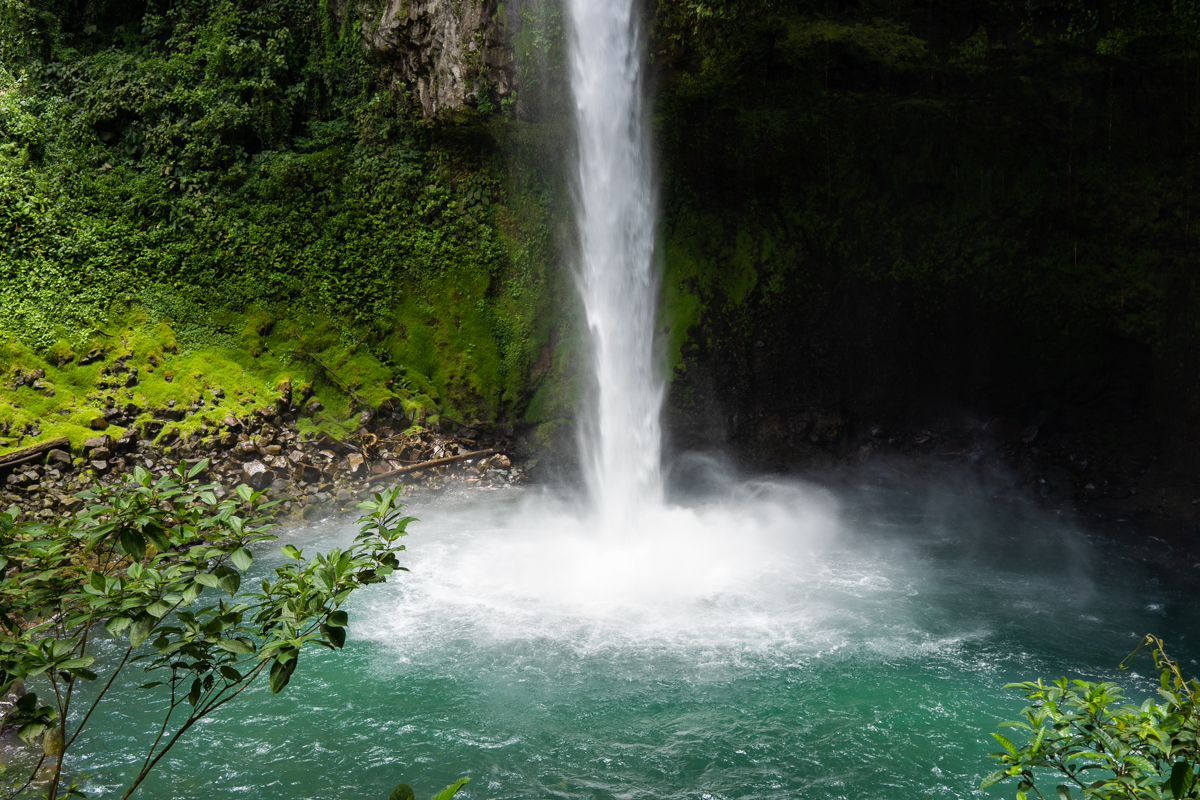
Rope Swing & Waterfalls
This little spot in La Fortuna has become such a popular swimming hole, that it shows up on your map app, so you shouldn’t have any issues finding it. There’s a rope swing over a swimming hole and cascading waterfalls under the bridge.

Mistico Arenal Hanging Bridges
Another option is to visit the Mistico Arenal Hanging Bridges. At this park, you can take a self-guided tour through different layers of the rainforest and it includes 6 hanging bridges. If you don’t have time, you’ll be able to see some hanging bridges in Monteverde as well.
Hot Springs
Being so near to the Arenal Volcano, there are many opportunities to visit some hot springs. You can either stay at one of the hot spring resorts in the area or you can purchase a day pass to visit their hot springs. There are many options and you can see them all along the road driving toward Arenal. Some popular places:
Tabacón Thermal Resort and Spa – $75-$89 Day Pass
Baldi Hot Springs Hotel & Spa – $40 Day Pass
Eco Termales Hot Springs – $44 Day Pass
If you don’t want to pay for a day pass, you can actually head to the hot springs river which is free (aside from parking). The river is shallow, feels like a warm bath, and is a great place to relax after hiking.
Stay: in La Fortuna or near Arenal National Park for 2 nights. (Tabacón Thermal Resort and Baldi Hot Springs Hotel above are also options!)
Day 4: La Fortuna + Arenal
Explore Arenal National Park, do some hiking and/or quad tour.
Arenal Volcano is a great place to do some hiking and is seen very prominently throughout La Fortuna. It’s actually amazing how large it looks from the town.
Arenal Volcano National Park
This national park consists of 29,692 acres and actually contains two volcanos, Arenal and Chato. While Arenal is still active, Chato has been inactive for a few thousand years and contains a lagoon inside the collapsed crater. Arenal on the other hand, has had consistent lava flows since 1968 and trails around the park take you past previous lava fields.
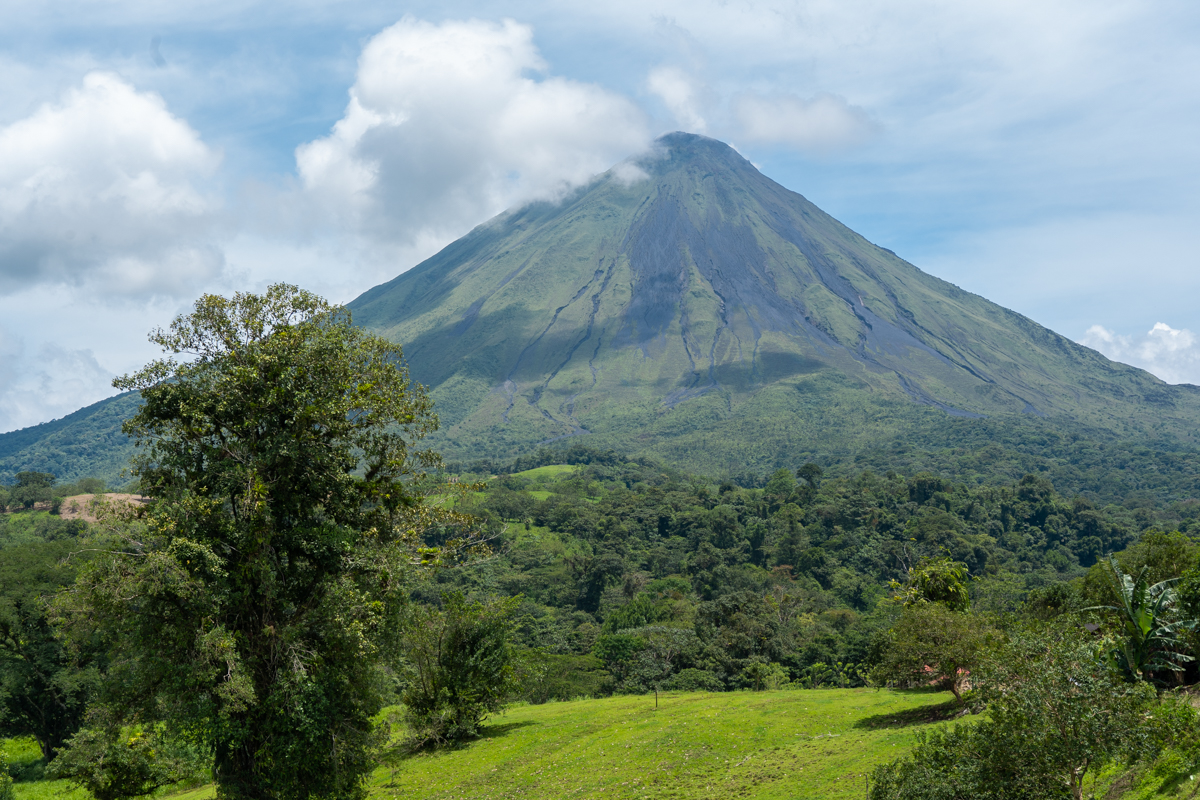
Another good way to explore the area around the volcano is to take a quad or horseback riding tour. Driving around, we saw several quad tours that looked pretty fun. They usually take you to some great photo locations and I think it would be pretty awesome to ride around with a volcano next to you. Some were even entering into the national park, so there might be trails that they can take you to within the park as well.
Day 5: Rio Celeste + Monteverde
Hike Rio Celeste, then drive to Monteverde.
Rio Celeste is arguably one of the most beautiful waterfalls in Costa Rica due to its milky blue color pooling beneath. The hike takes about 2-3 hours and you can explore some other trails besides the waterfall. Though it looks like Rio Celeste is a little out of the way, it actually doesn’t add that much time on to your driving.
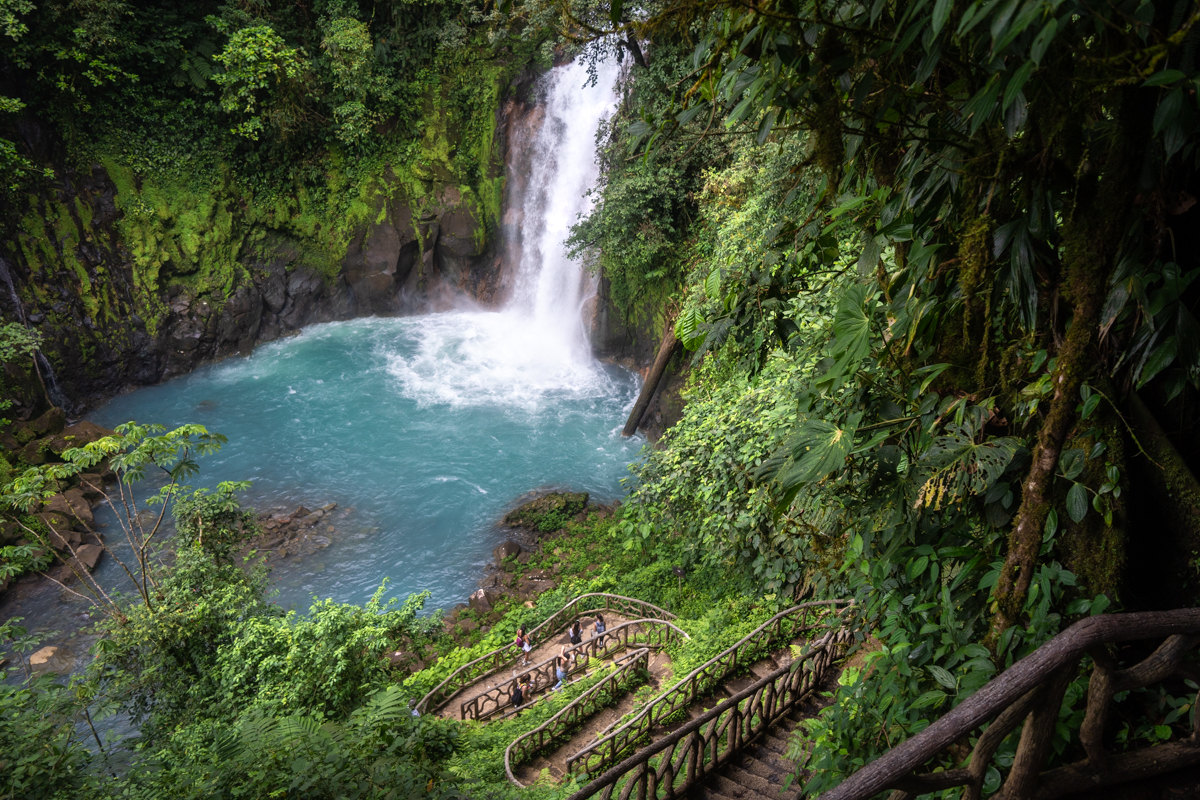
The next destination is Monteverde–it looks close to La Fortuna on a map, but it isn’t. You have to drive around Arenal Lake from La Fortuna and then drive up to the mountains, which takes time. La Fortuna to Monteverde takes about 3 hours and 20 minutes. If you decide to go up to Rio Celeste, it’s about 1 hour 15 minutes from La Fortuna and then a 3 hour drive to Monteverde. It adds an hour or so on to your driving time but it’s nice to break it up a little.
If you decide to skip Rio Celeste, you’ll have extra time to explore Monteverde and the cloud forests.
Stay: in Monteverde for 2 nights.
Day 6: Monteverde
Cloud Forest Exploration
Monteverde is one of Costa Rica’s most famous destinations and is known for its cloud forests. Cloud forests are higher altitude rainforests with low hanging clouds that touch the canopy of the forest. You’ll learn all about cloud forests and the animals that live there while hiking through the trails.
Monteverde Cloud Forest
The Monteverde Cloud Forest is the most famous place to go. It has many trails that take you through the cloud forest with interesting facts on plaques to read along the way. You’ll be surrounded by greenery as you explore the trails and look for wildlife.
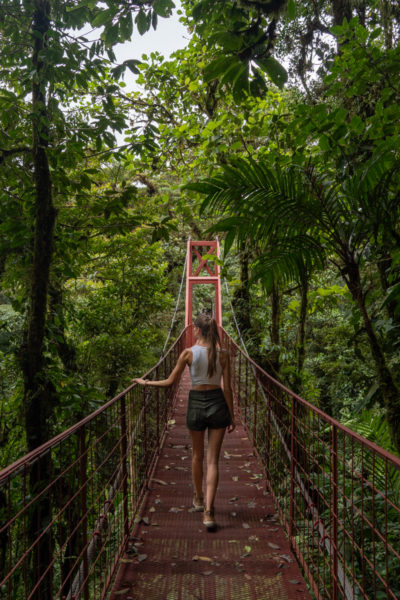
Santa Elena Cloud Forest Reserve
Another cloud forest option is the Santa Elena Cloud Forest Reserve. It’s smaller than the Monteverde Cloud Forest, typically less crowded and a little cheaper to visit. In terms of what you’ll see, there are no big differences between the two. Both cloud forests are home to similar wildlife and plant life.
Selvatura Park
This park is a little different from the two above as it’s a nature and adventure park. At Selvatura Park, you have the option to explore the cloud forests by ziplining through them or by taking the suspension bridges. The treetop walkways take you through the cloud forests and above them to get a bird’s eye view. There’s also a butterfly garden, sloth sanctuary and reptile exhibition within the park.
Day 7: Jaco
Drive to Jaco for some beach time.
Next, you’ll leave Monteverde and drive 2 hrs 40 min south to Jaco. Jaco is one of the closest beaches to San Jose and is a lively town with plenty of shops, restaurants and bars. It’s sandwiched by two smaller beach towns, Playa Herradura and Playa Hermosa. The area is a hotspot for surfing and the three beach towns are all within a close driving distance.
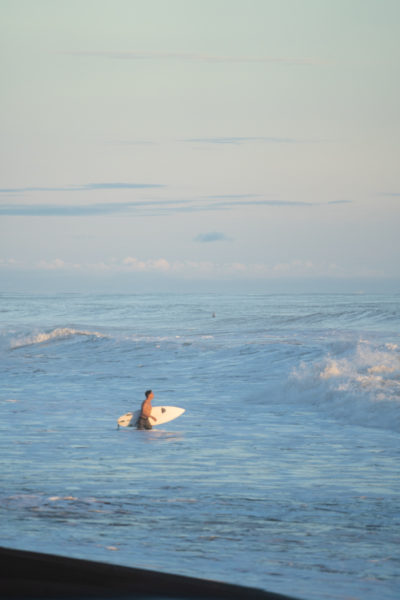
Jaco has the most options for restaurants and nightlife, so if you’re wanting to relax on the beach during the day and head out at night, Jaco is probably where you’d want to stay.
Playa Herradura
This beach town is the first one you’ll get to on your drive south and seemed to be the nicest. You’ll find large resorts and high-end neighborhoods while driving through. It has the smallest beach but it’s a cute spot with casual restaurants lining the beach road.
Playa Hermosa
Just past Jaco is where you’ll come across Playa Hermosa. The town of Playa Hermosa is more like a few restaurants along the main road. It’s sort of like the smallest town with the largest beach (which is a black sand beach) but if you’re just driving through, you might not even know how to get to the beach. It’s a quiet and sleepy town, but a great place to relax and surf if you know how.
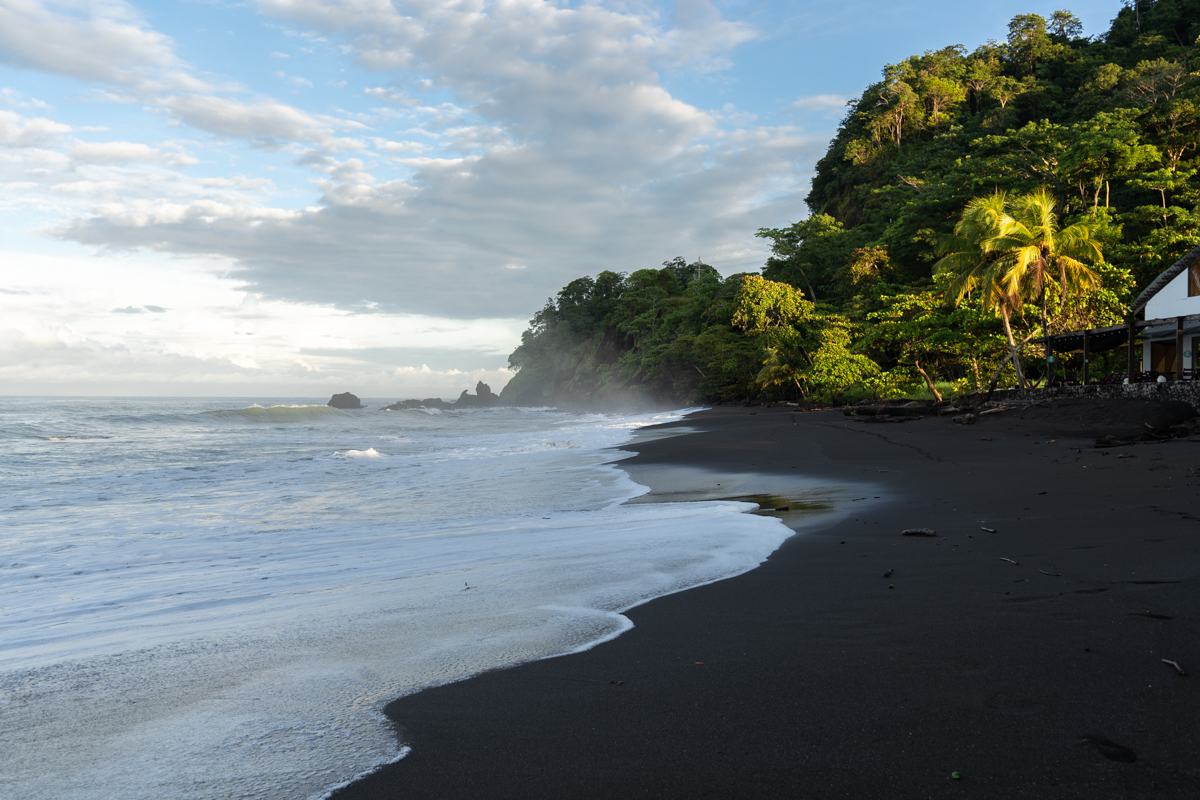
Stay: in any of the three towns. Jaco will have the most options while the other two only have a handful.
Jaco
- Jaco Laguna Resort & Beach Club $
- Croc’s Resort & Casino $$
- Selina Jaco $
- Best Western Jacó Beach All Inclusive Resort $$
Playa Herradura
Playa Hermosa
Day 8: Manuel Antonio
Explore Manuel Antonio National Park
One of Costa Rica’s most popular places to visit is Manuel Antonio National Park because it has a little bit of everything. You can explore the rainforest, hit the beach and see an abundance of wildlife here. There are several hiking trails you can take within the park and you can also hire a guide who will help point out wildlife along your hike.
You can hike the Sloth Trail where you might end up seeing a sloth (we did!) and hike some of the other trails to see what wildlife you stumble across.
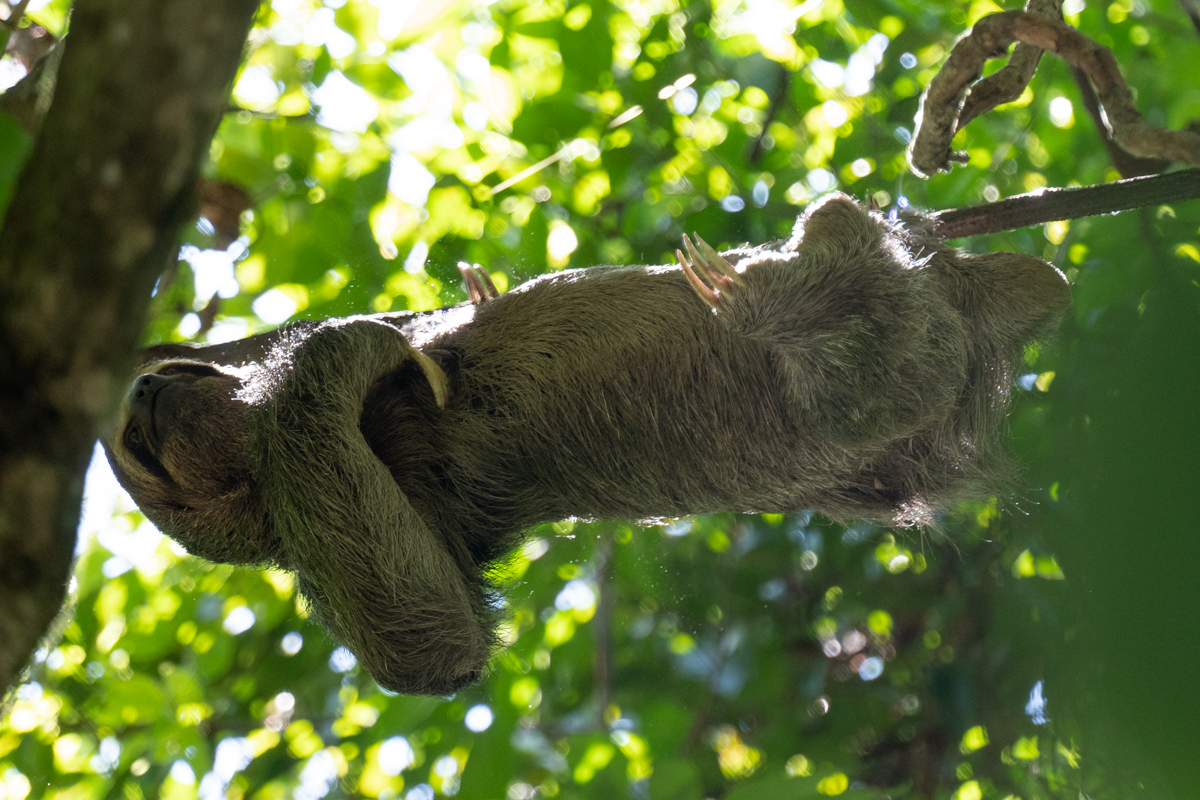
(Contrary to what we are told/taught, sloths don’t actually move that slow. They seem to stay in place if they are eating or hanging out. But other times when they were spotted, they had already crawled out of sight in the time it took to change my camera lens!)
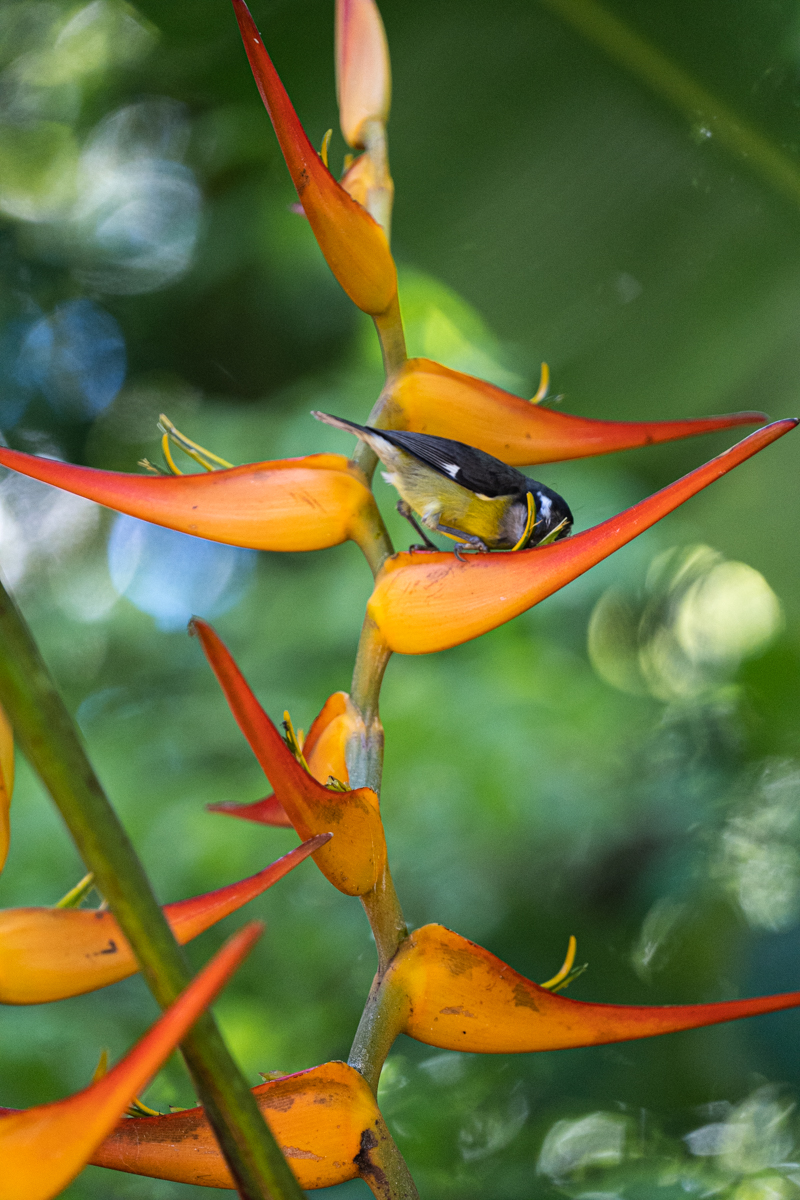

Some of the trails lead right up to the beach and there are some nice sandy paths that have the beach on one side and the forest on the other. This is where we saw about a dozen monkeys running through the trees. After you’re done hiking, you can hit the beach to relax for the rest of the day.
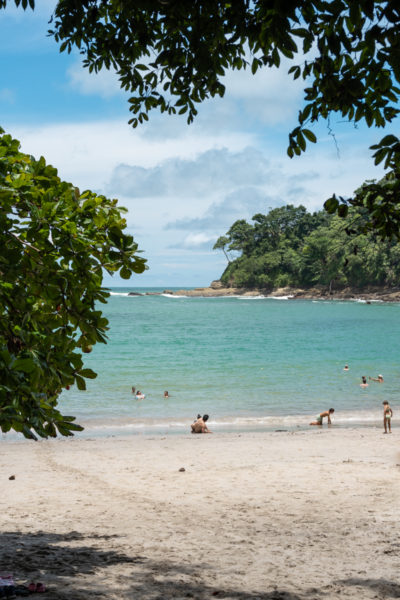
Tip: There are lots of people who pose as official park workers who have no affiliation with the park. They’ll try and direct you to a parking lot and a beach (that is not part of the national park) and then try to sell you tickets and charge you more. Just ignore them and drive past them. There are no official parking lots but the lot closest to the entrance was the cheapest. Same with tour guides.
Stay: Near Quepos or Manuel Antonio National Park for 2 nights.
Day 9: Manuel Antonio
Relax on the beach or go to a nearby waterfall.
If you want to spend your last day relaxing, you can head to a nearby beach to recover from all the hiking. If you want to have one last adventure before you go, there are a few waterfalls nearby that you might want to check out.
Option 1: Quebrada Arroyo Waterfall
This waterfall is located at the Los Campesinos Ecolodge which is about an hour away from Manuel Antonio National Park. Here you’ll find natural swimming pools, several waterfalls and two hanging bridges. It’s off the beaten path which means you’ll likely get a more rustic experience.
Option 2: Nauyaca Waterfall
About an hour away from the park is where you can find the Nauyaca Waterfall, often named as one of Costa Rica’s most beautiful waterfalls. The cascading falls are tiered and you can get to them by hiking or by horseback. You can swim in the pools below and check out the upper falls as well.
Day 10: Depart from San Jose
Drive back to San Jose for your return flight.
The drive back to San Jose from Manuel Antonio is just over 3 hours. Make sure to leave plenty of time to get back in case there is any traffic and plenty of time to return your car and get through the airport.
Things to Know:
Now that you’ve sorted through your 10 day Costa Rica itinerary, there’s a few things to know about traveling to Costa Rica in preparation for your trip.
Weather
Costa Rica has a rainy season and a dry season, but you shouldn’t let this deter you too much. The dry season is from December to April and you can expect to encounter less rain or no rain on your visit during these months.
The rainy season in Costa Rica starts in May and goes through November with the rainiest months being September and October. For the most part, the mornings will be sunny and it will rain in the afternoons in short periods. We went to Costa Rica in August and experienced some rain in the afternoons, some days where it didn’t rain at all, and one or two days where it rained most of the day.
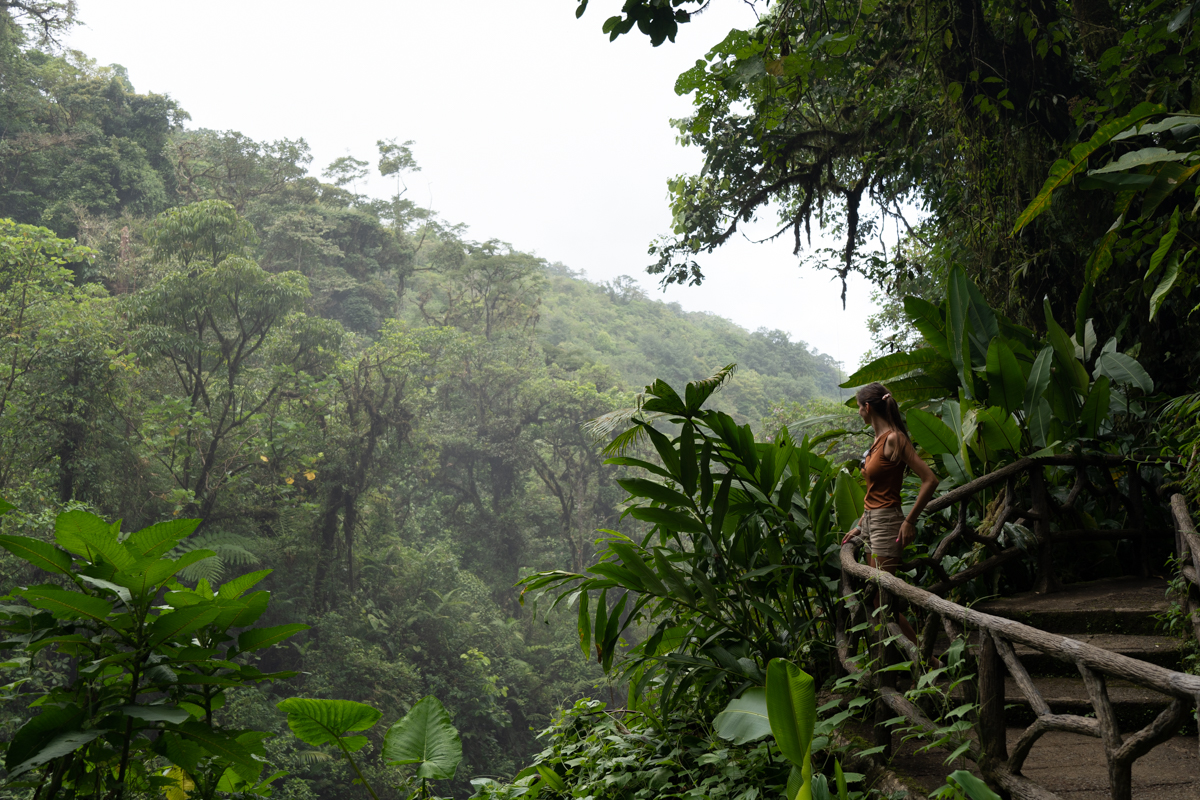
It also depends on what area you will be visiting. The more south you go on the Pacific side, the rainier it can be. However, we were told that the northern Guanacaste region would be a great place to visit because there would likely be little to no rain, and those were our rainiest days. Also, peak rainy season for the Pacific side is not peak rainy season for the Caribbean side. And generally, the Caribbean side tends to have decent weather throughout the year.
Best time to go
The rainy season in Costa Rica is also known as the green season as that’s when the rainforest will be its most vibrant. As someone who traveled during the rainy season, I wouldn’t worry about the rain too much. No matter which month you choose to visit in, there will be areas that you can go that will experience less or more rain. During the dry season, you won’t have to worry about the rain as much, but the rainy season is when the rainforest is at its best.
Best time to Explore
If you do visit Costa Rica during the rainy season, the best time to explore is in the mornings. Sunrise is around 5:30am and sunset is around 5:45pm. During our trip, rain would start around 2pm if it was going to rain, so that didn’t leave much time in the afternoons to explore before the sun went down. The mornings were usually when we had the best weather, so I highly suggest trying to be an early riser for this trip to maximize your time.
What to Bring
No matter which season you visit in, you’ll want to make sure you have some good hiking essentials. Comfortable hiking shoes, a backpack, water bottle and waterproof gear for hiking near waterfalls or natural pools. One of our most used items were water shoes for hiking near waterfalls. (I linked mine below!) If you visit during the rainy season, you’ll want to be prepared with some waterproof gear like a backpack, rain jacket, phone case, etc.
Shop essentials:
Safety
Costa Rica is one of the safest countries in Central America to visit. But, no matter where you travel–always be smart. Don’t leave expensive gear in your car, don’t wear flashy jewelry, if you don’t feel safe in an area–keep driving, etc.
I have to mention though that even though we never felt unsafe, I can’t say we felt too welcome. Apart from a few very friendly and helpful locals, we kind of felt like people were not friendly and unwilling to help. It’s a little hard to explain, but the vibe was just really weird. For a place where tourism brings in a lot of their money, I assumed people would be a lot more open and friendly (people tend to be friendly when they want you to spend money), but we did not really experience that.
Cost
Costa Rica is an expensive country to visit. Usually any country that accepts the dollar as currency, will have higher prices and you definitely see that in Costa Rica. Nearly every attraction or landmark will have an entrance fee and a parking fee. If it’s something worth seeing, there will be a fee. And that’s where things start to add up.
For entrance fees, you’ll be spending around $10-50 per person plus parking which is usually around $2-$6. Adventure parks or tours can be $80-$120 or more depending on what it includes. And if you want a guided tour within a park to spot wildlife, that will be an additional fee per person.
For places to stay, you can find a wide range of prices. If you’re on a budget, you’ll definitely be able to find cheaper places to stay. If you have a higher budget, there are some really nice eco resorts to splurge on.
Currency
The official currency of Costa Rica is Colones, but dollars are accepted in a lot of places. But take note: if you pay in dollars, you’ll get your change back in colones, which isn’t necessarily a bad thing. You’ll want to have some colones on hand for smaller shops, smaller restaurants, parking fees, tolls, etc.
Tip: Take note of the type of bill you receive. The newer bills have a see-through section on them, while the older bills do not. No one will except the older bills (I THINK they are trying to get them out of circulation so the only place that will accept them is the bank for trade-ins).
Somehow we ended up with one from getting change back and couldn’t get rid of it. So if someone tries to give you one, refuse it and have them give you a newer bill.
Guides
Guides at many of the parks are optional. If you want to guarantee that you’ll see animals, you might want to consider hiring one of the guides at the national parks. It’s pretty difficult to find animals on your own because you don’t know what to look for. They will also have a scope with them so that you can see them up close.
That being said, groups with guides are all over and groups tend to form when something is spotted. Even if you don’t hire a guide, you’ll likely end up seeing the larger animals since everyone will be pointing them out. But guides will be able to point out smaller animals and give you more information.
Photography
There are ample opportunities to photograph wildlife. A lot of times, animals aren’t close enough to get a good picture if you are shooting on your phone or a regular camera. So if you want to come back with some nice photos of animals and are only using your phone, you might want to hire a guide for some of the hikes. Guides carry around spotting scopes that you can hold your phone up to and take a picture through the scope.
I recently got a new camera and don’t have a telephoto lens yet for it, but you can actually rent a lens online! I used Borrow Lenses to rent a telephoto lens for this trip. It ships with 2-day shipping right before your trip and you send it back in the same box with a provided return label when you get back. Worked out pretty well!
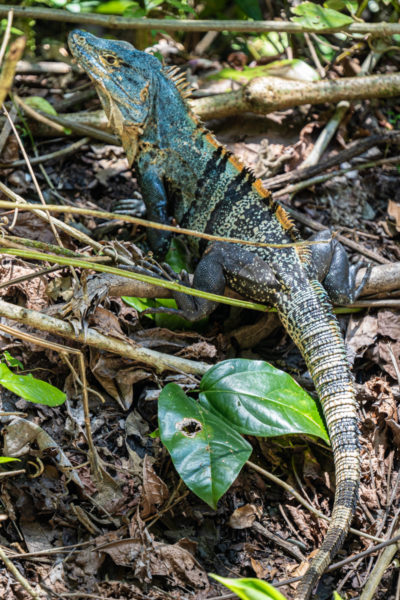
Camping
Camping in Costa Rica is a great option if you want to save some money on accommodation and/or stay in the wilderness. You’re able to camp most anywhere in Costa Rica and there’s lots of options for campgrounds or dispersed camping. We ended up renting a 4×4 from Nomad America for part of our trip that had a fold out tent on top of our car!
Optional Tours
Taking a tour in Costa Rica is a fun way to explore the area. Some of the most popular tours are:
- Ziplining Though the Rainforest
- Quad Tours
- Horseback Riding
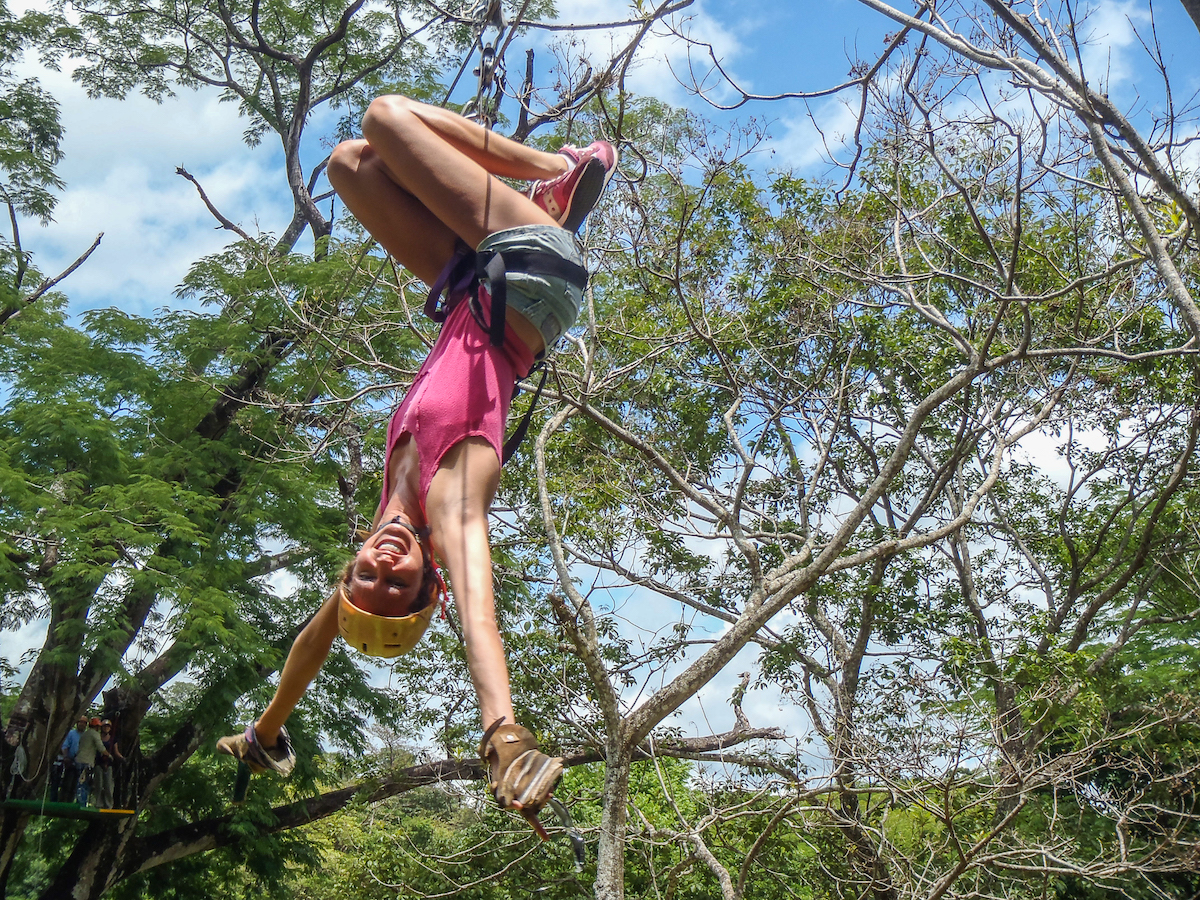
Tours are found all over, especially ziplines. I would plan for these ahead of time if you want to add any on to your itinerary so you can plan your day around them. Check out some tour options below:
PIN IT FOR LATER



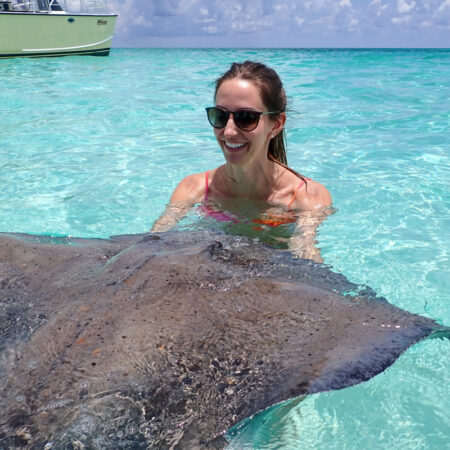
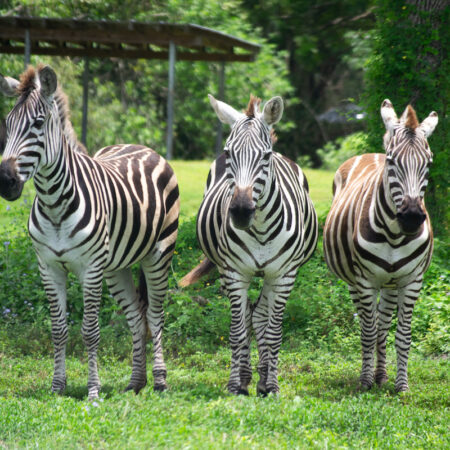
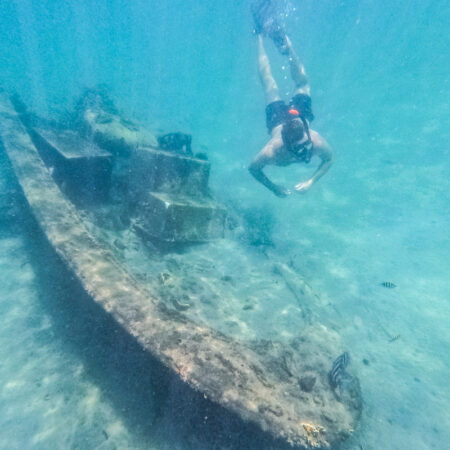
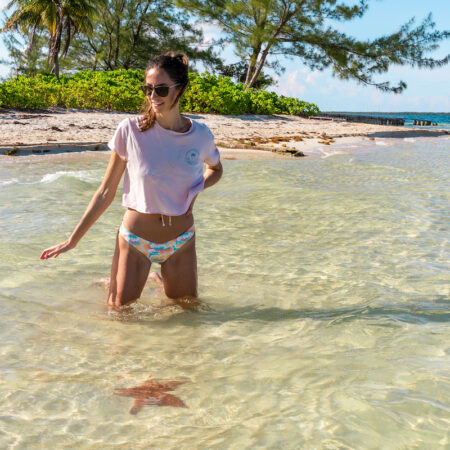

Great itinerary with lots of helpful insight. And I love the map you’ve created to help orient us.